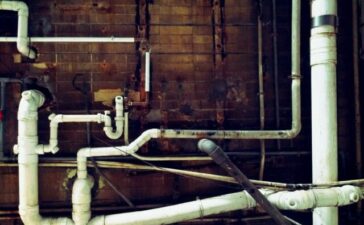During an earthquake, residential and commercial buildings can be affected by extreme shaking for a short or prolonged period of time. The L.A. Times reports 1.2 million homes in California are at risk of collapse because of improper bracing between the building and its foundation. Earthquake retrofitting is a solution for unsafe homes that could lead to injury and death or residents during seismic activity. The first step in retrofitting for an earthquake is to undertake an evaluation of a property to judge its safety during an earthquake. Older homes are most at risk of damage during an earthquake because they were constructed before building codes.
1. The Safety of a Foundation
Earthquake retrofitting often focuses on the foundation of a property. The design of modern homes in Oregon and California takes into account the risk of an earthquake. Older homes built before the 1970s in Oregon and before 1945 in California can have a foundation issue that needs addressing. Retrofitting examines the link between the foundation of a property and the walls that need to be attached. If a building is not attached to the foundation it can slide off during an earthquake, leading to the risk of collapse and human injury.
2. Business is Affected
The most famous case of a company quickly learning the potential for financial problems following an earthquake is that of the brewer Anheuser-Busch. An earthquake in the mid-1970s led to the brewery retrofitting its facility to avoid shutdowns in the future. The Federal Emergency Management Agency reports 40 percent of businesses that close following an earthquake never reopen. By retrofitting a business property, there is less risk of permanent closure for business owners.
3. Avoiding Financial Issues
When a property collapses during an earthquake or is condemned, the financial responsibility falls on the property owner. Alongside any medical bills that follow physical injury, the regular payments for a property will continue. Seismic retrofitting limits the financial impact of a collapse of damage. For commercial property owners, an earthquake can cause a closure that halts cash flow and damages the existing stock. During the period a commercial property is being repaired, mortgage and rent payments will still be due. Retrofitting a commercial property to limit the damage caused by an earthquake is a positive step to avoiding the financial problems many face following prolonged shaking.
4. Avoid a Collapse
The shaking associated with an earthquake can have a devastating effect on a property. The correct bracing of a building has been shown by Portland State University to reduce the possibility of collapse. Each building in an earthquake area needs its foundation and walls to be attached securely. By making sure the foundation and walls are attached, there is a lower risk of collapse when extended shaking occurs. A building collapse will take place when the structure cannot remain linked to its foundation during the earthquake. Some of the problems caused by an earthquake identified by the State of Oregon include:
- Sliding off the foundation
- The racking of exterior and weight-bearing walls
- Lifting the property off its foundations
5. Avoid Lawsuits
There are several reasons why it is a good idea to retrofit a property for earthquake protection, including avoiding lawsuits. There have been lawsuits filed against the owners of commercial and residential properties for the deaths and injuries suffered by residents and visitors. The precedent for a financial claim being made against a property owner was made following the 2003 Paso Robles earthquake, where a property owner was sued for negligence. The impact of the earthquake on the property led to the death of a resident and a $1 million financial settlement.
6. Relatively Inexpensive
The cost of earthquake retrofitting has reduced over the last two decades. The understanding of the problems caused by an earthquake for buildings without upgrades and retrofitting has improved. The cost of retrofitting for earthquake safety changes in different areas of the U.S., with most areas along the West Coast completing the process for less than $10,000.
7. A Short Timeframe
Among the several benefits of completing a retrofit for earthquake safety is the short timeframe needed to complete most projects. The majority of projects are completed in less than one week to provide earthquake protection speedily.
8. Increased Market Value
The safety of a property is a key factor in judging its real estate value. For potential buyers, the knowledge their new home is safe from the dangers caused by an earthquake leads to a higher market value. Properties that have been through the retrofitting process have higher market values and more curb appeal to potential buyers.
The dangers caused by earthquakes are well known and can lead to the collapse of buildings of all types. The financial benefits of retrofitting are easy to see. The ability to maintain safety for residents and visitors is another reason why it is vital retrofitting takes place fr all homes and commercial properties at risk of damage.






